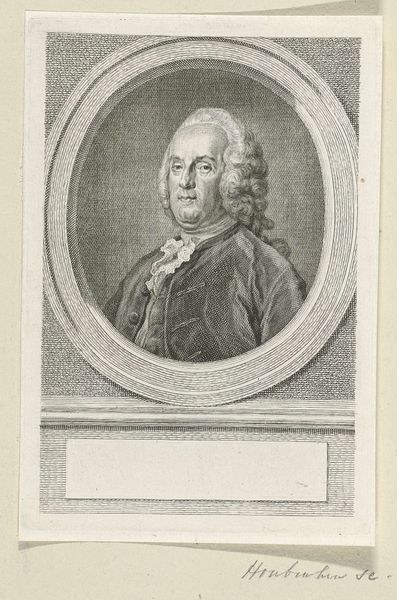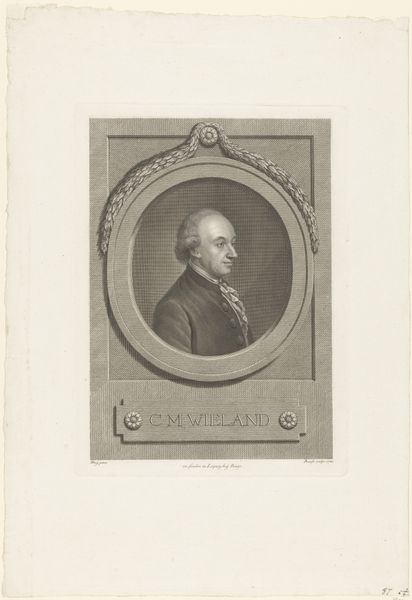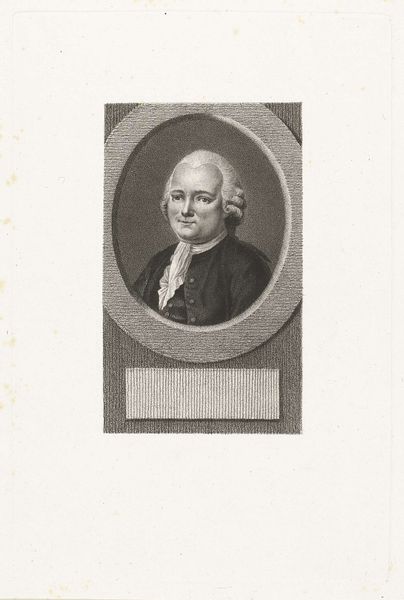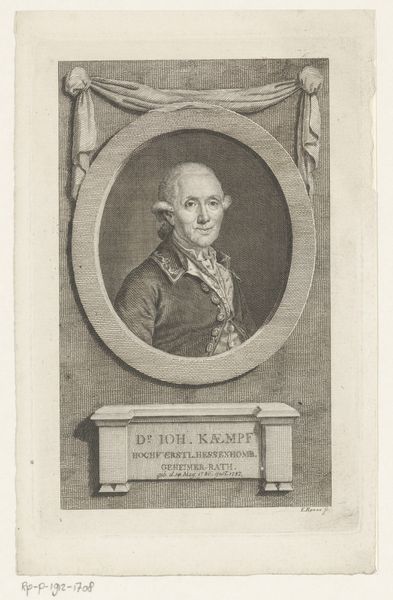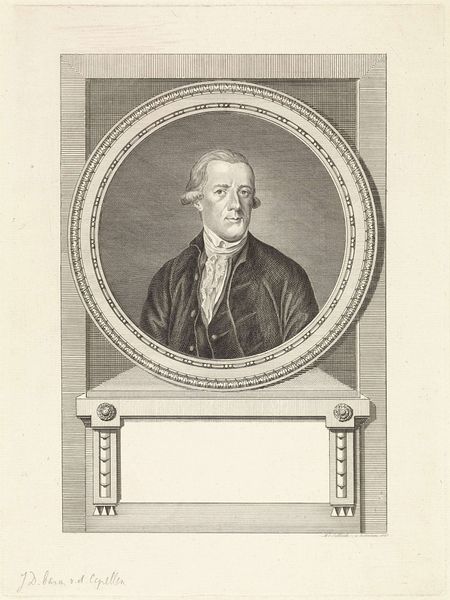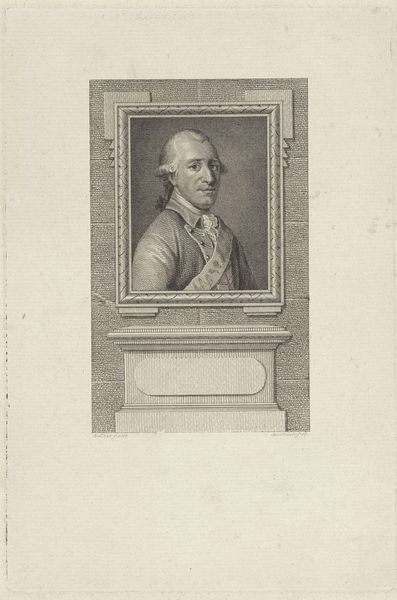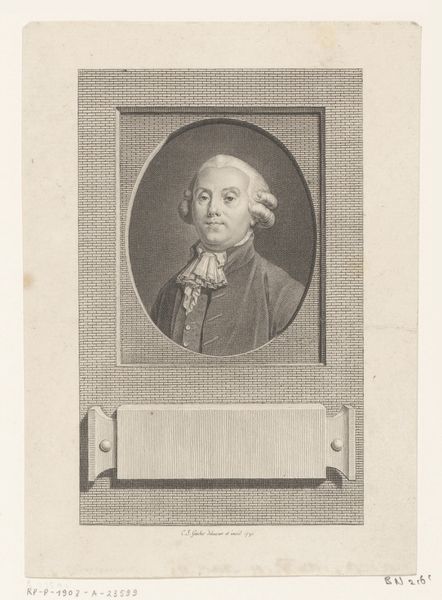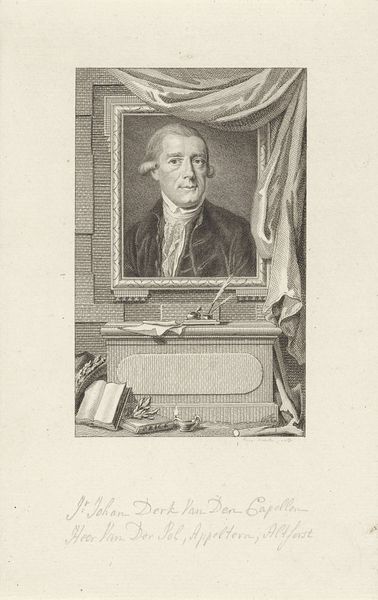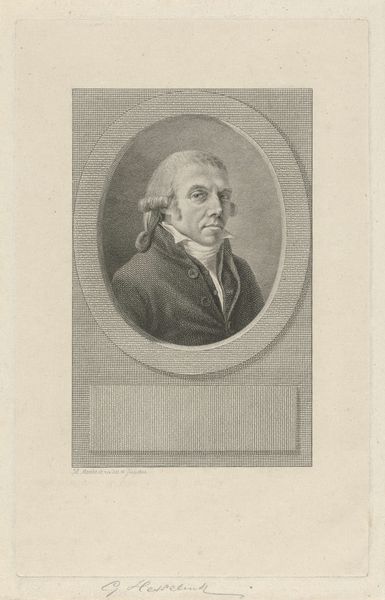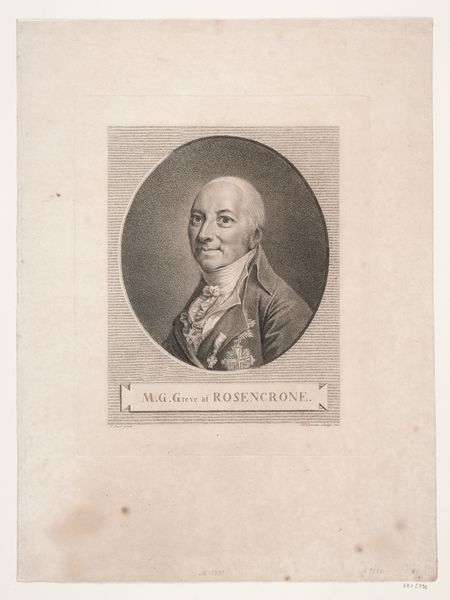
#
pencil drawn
#
aged paper
#
toned paper
#
light pencil work
#
pencil sketch
#
old engraving style
#
sketch book
#
personal sketchbook
#
portrait drawing
#
pencil work
Dimensions: height 180 mm, width 113 mm
Copyright: Rijks Museum: Open Domain
Editor: This is "Portret van Hendrik van Wijn," a pencil drawing from 1791 by Reinier Vinkeles, held at the Rijksmuseum. The aged paper gives it such a wonderful, almost sepia-toned quality. What really strikes me is how formally presented it is; it seems to focus entirely on geometrical presentation above almost everything. What do you see when you look at this portrait? Curator: From a formalist perspective, I'm immediately drawn to the rigorous structural elements. Note how Vinkeles has framed the portrait not once, but twice – first within the drawn frame and then by placing that image upon a rectangular plinth, all constructed within an imagined, neatly-organised, three-dimensional plane of evenly stacked bricks. What does this elaborate layering do to our perception of the subject, Hendrik van Wijn? Editor: It seems to further isolate the subject within a constructed space. Like he's being presented as an idea almost as much as an individual? The layering emphasises the artificiality, drawing attention to the presentation. Curator: Precisely. The structural geometry imposes a sense of order, control, and deliberate artistry, so this is not a candid portrait. Do you notice any dissonance between the structural, geometric shapes and forms versus the flowing organic shapes of the face or clothing? Editor: Absolutely. The softness of his face and the curls in his hair stand in sharp contrast to all those precise lines and brickwork surrounding the frame. Curator: Consider that tension. Vinkeles has intentionally set up this play between the constructed, almost architectural surrounding elements, and the organic form of the human face. It creates a visual push and pull. Are you at all reminded of "framing" of portraiture by any particular historical moment? Editor: That's a really interesting question. Perhaps something neoclassical that plays with both presentation of idealized geometry, and the almost "realistic" element that humans introduce? Curator: Yes, indeed. So the artist creates dialogue between geometric formality, and his subject in this print. An intriguing dichotomy, indeed. Editor: I'm now much more aware of how Vinkeles uses form to communicate ideas of status and the interplay between reality and artificiality. Thanks! Curator: It has been a pleasure to unpack this artwork's structure. Hopefully it will lead to further investigations by all.
Comments
No comments
Be the first to comment and join the conversation on the ultimate creative platform.
